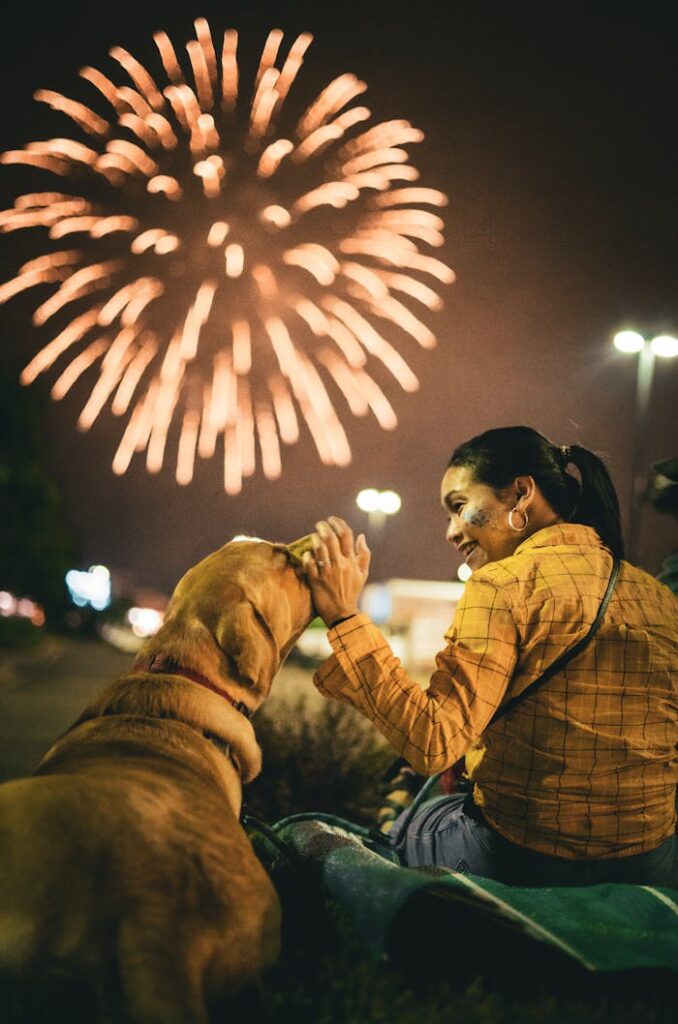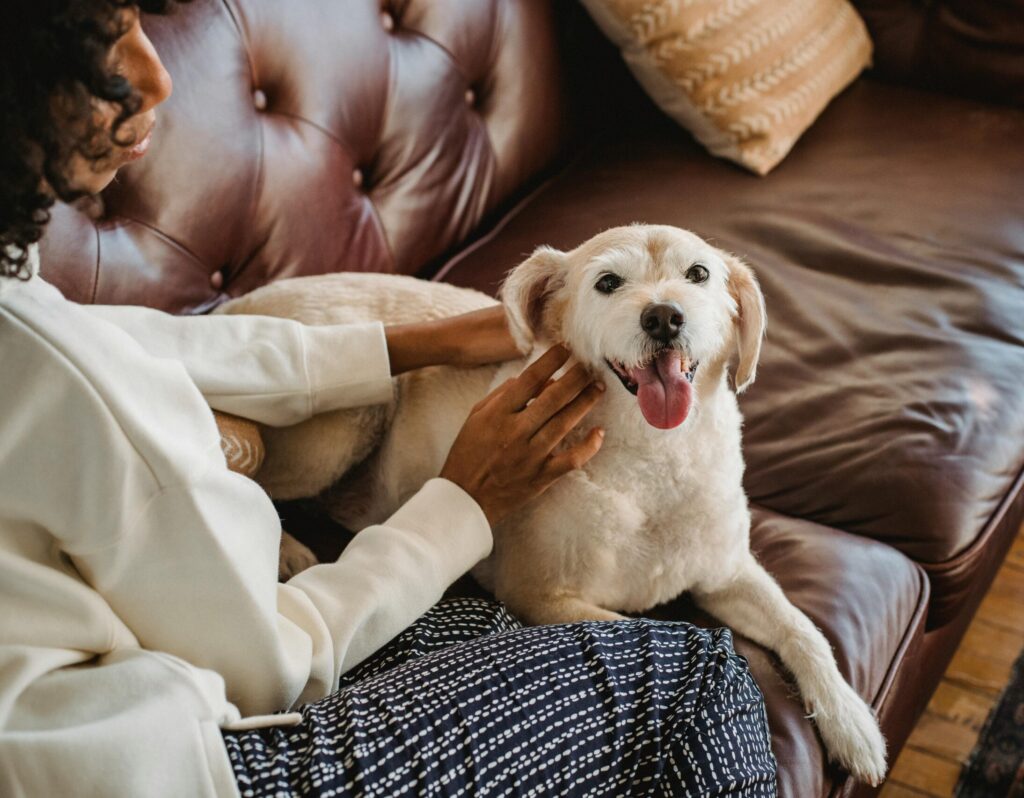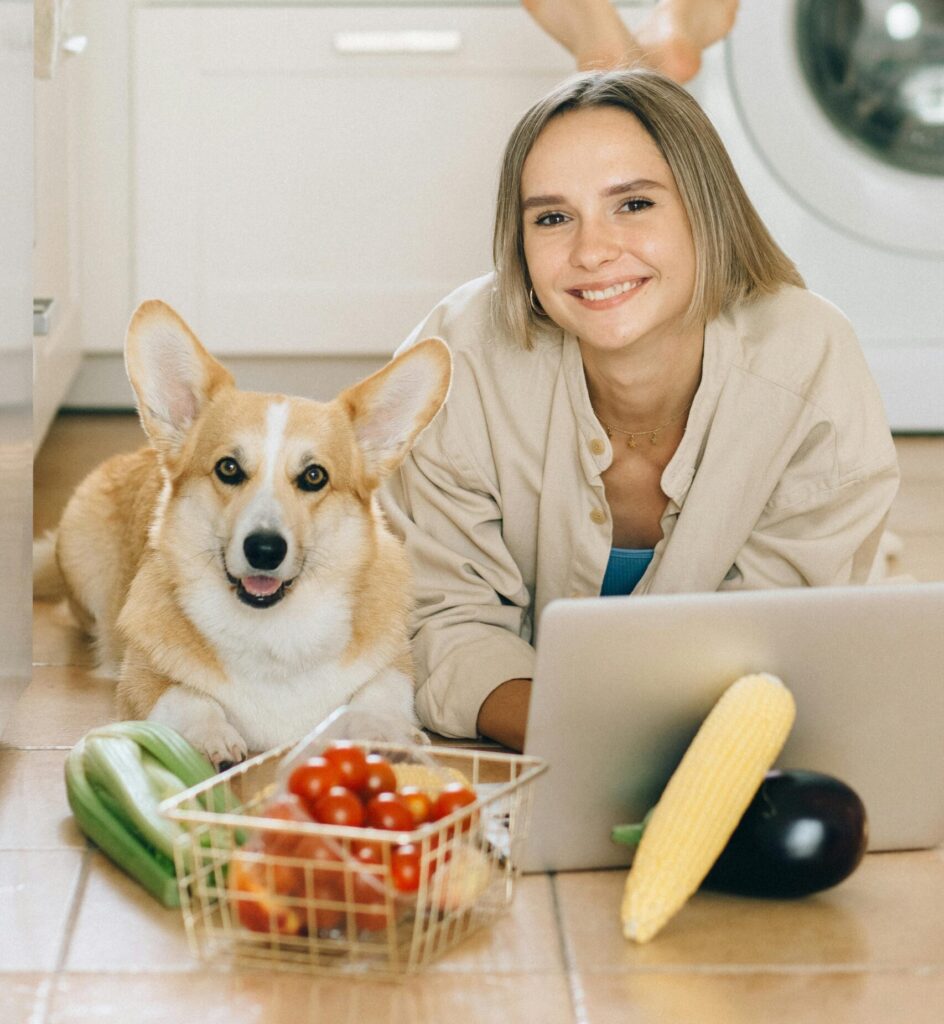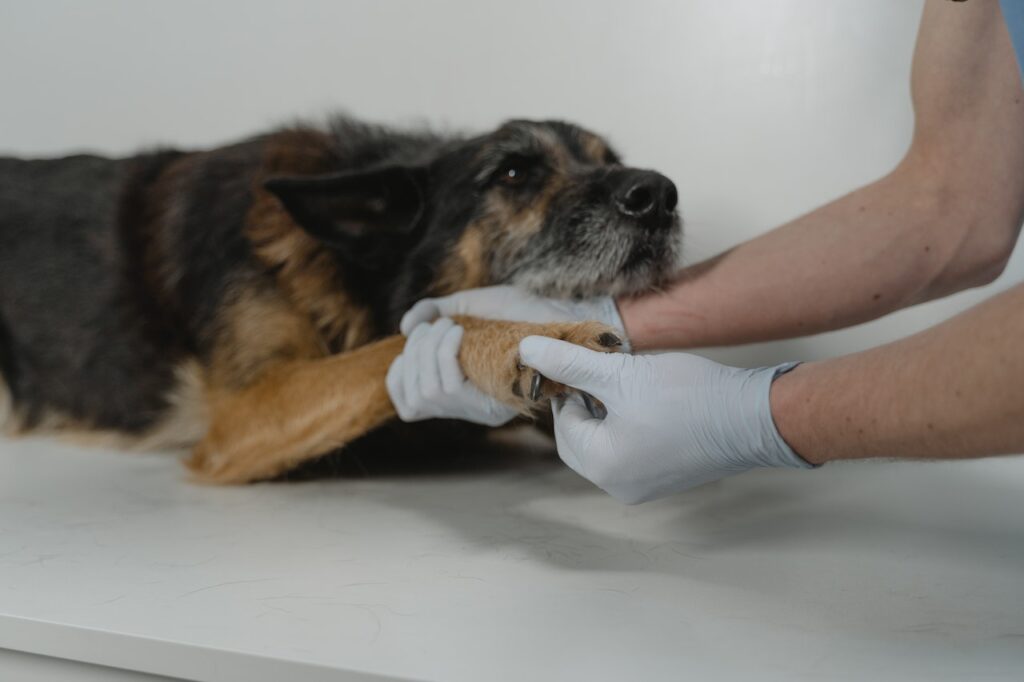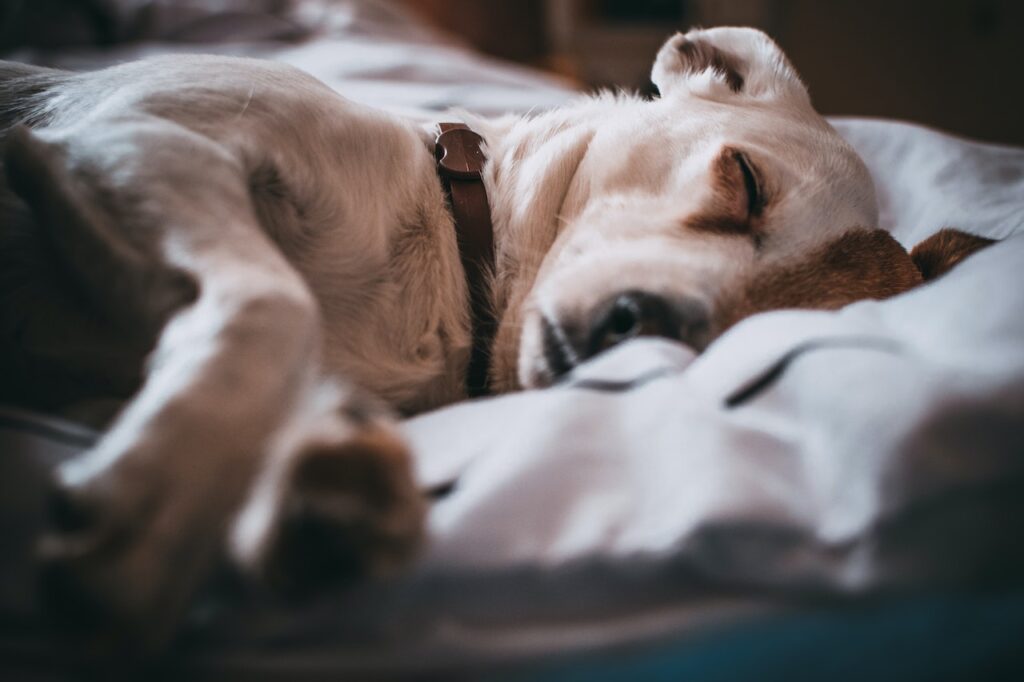Don’t Let Fireworks Frighten Your Fido: Tips for a Calm and Happy Fourth of July
Ah, the Fourth of July! A time for barbecues, backyard gatherings, and of course, fireworks. But for our furry companions, the booming sounds and flashing lights of fireworks displays can be a terrifying experience. They either love it or despise it and we worry about how they are handling the day. Here’s how to help your dog stay calm and content during this loud celebration: Preparation is Key: Before the Fireworks Begin Talk to Your Vet: Discuss your dog’s anxiety level with fireworks and explore potential solutions. Your veterinarian might recommend anti-anxiety medication or calming aids. There are options that they have that would work for your dog’s breed, personality and size. Consider Boarding: If your dog has severe anxiety, boarding them in a quiet location away from firework displays could be the best option. This option provides a safe space for them and if you have a fear of them running away, then this is a good option as long as the boarding is contained. Desensitization Training (Optional): It is estimated that about 45% of dogs have firework phobia, so we recommend starting to desensitize your dog to loud noises well before the Fourth of July. Play recordings of fireworks at a low volume and gradually increase the volume over time, pairing the sounds with positive reinforcement like treats or praise. Creating a Safe Haven at Home: Stay Indoors: Keep your dog inside during firework displays. Close windows and curtains to muffle the noise and create a dark, calming environment. If necessary, stay with them and turn on a movie or sit with them during the loud noises to keep them calm and comfortable. Provide a Safe Space: Create a designated safe space for your dog, like a crate covered with a blanket or a quiet room in the house. Provide them with familiar toys and bedding. This is one of the many reasons to consider crate training for your pup to help provide them with their “safe” space when they need it. Stay Calm & Comforting: Your dog picks up on your emotions. Stay calm and reassuring throughout the evening. Avoid yelling outside or at others setting off the fireworks. Offer cuddles, soothing words, and distractions like chew toys or puzzle feeders. Additional Calming Techniques: Leash and Identification: Even the most well-behaved dog can bolt in a scared state. Ensure your dog is wearing a well-fitting leash and collar with updated identification tags. Keep the leash on your dog at all times during the day if you are outside at an event. You do not know if one type of sound will set your dog off running. It can be unpredictable but by keeping a leash a bolting episode can be prevented. CBD Products (Consult Your Vet): Discuss the use of veterinarian-approved CBD products with your vet to see if they might help alleviate your dog’s anxiety. If you are on the fence about trying CBD products on your dogs, here is more information on using CBD products from the American Kennel Club. Thundershirts: These snug-fitting garments apply gentle, constant pressure, mimicking the feeling of swaddling and promoting a sense of calm in some dogs. These are a good choice and can help with other loud episodes like construction noise or thunderstorms. Over-the-Counter Calming Aids: Consult your veterinarian about calming aids formulated with natural ingredients like chamomile or L-theanine. There are many to choose from at different price points. We suggest trying them out beforehand to make sure that it works for your dog and that you know what to expect from their reaction. Remember: Never medicate your dog without first consulting your veterinarian. The appropriate solution will depend on your dog’s individual needs and anxiety level. By planning ahead and creating a safe and comfortable environment, you can help your dog enjoy a stress-free Fourth of July. So, celebrate responsibly, keep your pup safe, and have a happy holiday!
Don’t Let Fireworks Frighten Your Fido: Tips for a Calm and Happy Fourth of July Read More »

